BEWARE: Check Scams Have Been Found in Louisiana

So today, I received a large manilla envelope containing a check addressed to me from a legitimate looking return address. I've received checks before that say something like "By depositing this check you agree to the following terms." But this check had no such disclaimer.
If you've received something like this it's tempting to think "I can deposit it and I've got their money, what can they do?" But don't. There are several check scams out there, and if something doesn't feel right, trust your gut.
First of all, this check looks legitimate. Routing numbers... account number... legitimate looking name... etc... but the check just didn't 'feel right'... it felt cheap. And c'mon, why would some company just send me almost $9,000 out of the blue?? Trust your gut.
By doing just a little research, you could possibly save yourself not only a lot of time and trouble, but also possibly several thousand dollars.
My miraculous windfall also came with an instruction letter. No red flags here. First, check all the spelling errors and incorrect grammar usage. These are good clues that this wasn't written by someone with English as their first language, meaning it probably came from overseas, making them impossible to trace.
Second, they want you to text to the number provided in the letter. This gives them your phone number. And they're asking for more personal information.
By doing a little research, you can help protect yourself from check scams like this. According to finra.org, here are some helpful tips.
How to Protect Yourself From Check Scams
To avoid fake check scams, follow these tips:
- Don't cash the "unexpected" check. Companies, including FINRA, rarely if ever send checks that don't include some explanation of why the check was issued. Unless you are expecting the check — and you are absolutely certain it is meant for you — do not cash it.
- Don't "keep the change. "No legitimate company will overpay you and ask that you wire the difference back to the company or to some third party. Be extremely wary of any offer — in any context — to accept a check or money order in an amount greater than you are owed.
- Check the sender's methods of communication. Legitimate businesses rarely communicate exclusively through social media or messaging apps, and hiring managers and executives of those companies generally do not use personal email accounts (e.g., Gmail or Hotmail) for business purposes.
- Call the company directly to verify the check. Remember that some fake checks will have a legitimate company's actual account number with the correct bank routing number. Call the company directly to verify the check, using a telephone number you obtain on your own from directory assistance at the company. Do not use any telephone number that appears on the check or in any instructions you receive. For FINRA checks, call (301) 590-6500.
- Know the hallmarks of fraud. Fake check scams typically have a number of red flags, such as:
- Typos: Watch out for online postings, texts or emails that are riddled with typos and poor grammar.
- Mismatched names: Compare the name of the person or company posting the opportunity with the name on the check you receive — and beware if they don't match.
- Pressure to act quickly: Be aware that it can take 10 days or even more for your bank to determine that a check is counterfeit. Until you have verified with your bank that the check has cleared — do not wire or transfer funds.
If it seems too good to be true... well, you know the rest.
10 Most Hacked Computer Passwords
Gallery Credit: Canva
Here are the Top Most & Least Secure Tech Devices
Gallery Credit: Mike Martindale
More From News Radio 710 KEEL









